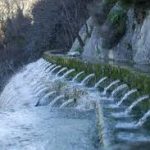Do you know what Oleotourism is?
What is Oleotourism?
Oleotourism is made up of two words, [Oleo] which comes from Latin and means “Oil” and [Tourism] we all know what it is. So, Oleotourism is a way of sharing the culture that surrounds the world of oil, from when the olive is in the olive tree until it becomes “Liquid Gold”.
Fundae Training, Course for Professionals
We have the possibility that the oleotourism experience can be expanded for companies, professionals in the hospitality sector: cooks, food critics, tourism … with the possibility of accommodation in our farmhouse El Molino Jabonero.
Whether you are a professional or if you want to enter this wonderful world of EVOO, we offer you training to deepen in oil tastings.
These training days are given in two days, Saturday and Sunday. If you are interested, contact us.

Oleotourism Prices
Normally, we work with groups of at least 10 people. In addition, at the olive harvest time of the year, a demonstration of traditional grinding can be carried out. If the group is smaller, a minimum rate of € 30 will be charged, plus the rate for each person who attends, but if there is someone very interested, it can be organized, prior budget.
OleoTourism Basic
- Guided Tour of the Farm and Facilities
- Tasting of our EVOO
€/Per person15
Duration approx. 90 min
OleoTourism Premium
- Guided Tour of the Farm and Facilities
- Tasting of our EVOO
- Breakfast or Aperitif (until 11:00 am)
€/Per person25
Duration approx. 120 min
OleoTourism Deluxe
- Guided Tour of the Farm and Facilities
- Tasting of our EVOO
- Breakfast or Aperitif (until 11:00 am)
- Lunch
€/Per person35
Duration approx. 120 min + Lunch time
Where to go?
Our facilities and olive groves are located in Villanueva del Trabuco, (Malaga) in the heart of Andalusia. Ctra. Villanueva del Trabuco-Alfarnate, km. 4 s / n. Villanueva del Trabuco (Malaga)
It is an ideal place to experience Oleotourism first hand.
We are at:
- 30 km from Antequera
- 15 km from Archidona
- 45 km from Malaga
- 80 km from Granada
What you see on an Oleotourism Tour
Tasting time! After the whole process of extracting the olive juice, we will carry out a tasting, this experience is not only to taste the oil, but to learn to identify the different organoleptic properties: its color, flavor, smell and texture.
For the gastronomic part of the visit we will give you a piece of bread to dip it in oil. The tasting is divided into two parts:
- The first part consists of knowing the different qualities of extra virgin olive oils. We will start from the lowest quality (not bad) to the highest quality.
- The second part would be to try the different varieties: each variety of olive differs in taste, bitterness, spiciness … and that is just what we are going to learn.

Fountain of the 100 Caños
Route and excursion to the fountain of 100 Caños. It is highly recommended visit and that is why we want to share it with you, so that after our guided tour around the world of liquid gold, you can continue on your own to visit the famous fountain of the hundred pipes, it is a creation of nature and where the Guadalhorce river is born. We recommend going between November and March.
The distance that separates the Cortijo Molino Jabonero from the fount of the hundred pipes is 2 km, it is a very short walk and suitable for all audiences, from children to our grandparents.







